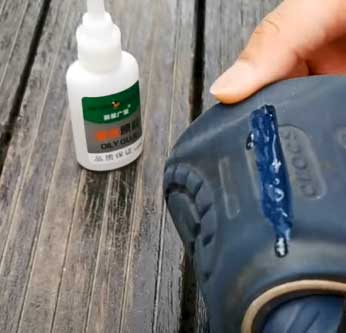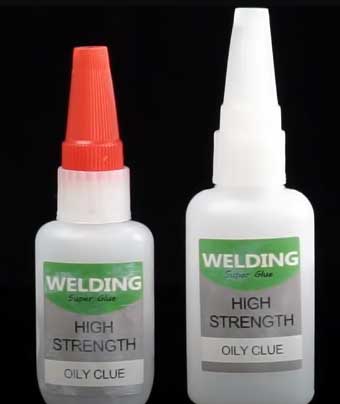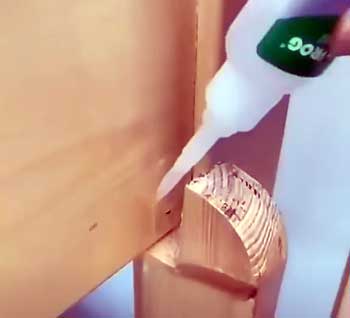When it comes to tackling household repairs, craft projects, or even some heavy-duty fixes, having a reliable adhesive is essential. You want something that will stick, stay strong, and hold up over time, right?
That’s where welding high-strength oily glue comes into the picture. This isn’t just any ordinary glue; it’s designed to handle a variety of surfaces and materials with ease.
So, if you’ve been searching for a powerful adhesive, this might be just what you need. But where should you buy it? I’ll get into that shortly.
Why I Decided To Try Welding High-Strength Oily Glue?

I’ve had my fair share of frustrating experiences with adhesives that either don’t hold up or make a mess.
From trying to keep a doorknob from falling off to fixing a broken ceramic vase, the quest for the perfect glue has been ongoing.
When I first heard about welding high-strength oily glue, I was intrigued by its promise of a strong bond that works on multiple surfaces.
After some research and reading reviews, I decided to give it a shot.
I bought it online, where I found the best price and fast shipping. If you’re considering getting one, I’d recommend looking for it on platforms like Amazon or specialized hardware stores that offer good return policies, just in case.
- First Impressions: What’s In The Bottle?
When the bottle of welding high-strength oily glue arrived, I was surprised by its compact size. It’s not one of those large tubes of glue, but don’t let that fool you—this small bottle packs a punch.
The glue itself is quite thin, almost watery, which made me a bit nervous about how it would apply. However, the bottle’s design, with its pin-point nozzle and extra-long tip, made it easy to control.
I could apply the glue precisely where I needed it without worrying about it dripping or oozing all over the place.
- Putting It To the Test
Now, onto the real test—does it work?
The first thing I tried fixing was that pesky doorknob I mentioned earlier. I had already tried several well-known super glues and even some of the more industrial options like Ape glue, but nothing seemed to hold.
I applied just two drops of the welding high-strength oily glue, and I was blown away. Not only did the doorknob stick instantly, but it also held firm. It’s been weeks now, and the knob hasn’t budged, even with regular use. I’m convinced that I’d have to tear the entire door apart to get that knob off now.
Another project I tackled was reattaching the discharge chute on my lawnmower. This part takes quite a bit of stress during mowing, so I wasn’t sure if any glue could handle it.
But again, the welding high-strength oily glue didn’t disappoint. The bond has held up perfectly, even after several heavy mowing sessions. I also used it on a lazy Susan in the kitchen, and it’s been holding strong ever since.
Pros of Welding High-Strength Oily Glue

- Versatility Across Surfaces: One of the standout features of this glue is its ability to bond with a wide variety of materials. Whether you’re working with metal, ceramic, wood, rubber, plastic, or even fabric, this glue seems to handle it all with ease. This makes it incredibly versatile, saving you from needing multiple types of adhesives for different projects.
- Strong and Durable Bond: The strength of the bond is impressive. It’s not just a quick fix; this glue is built to last. Once it’s set, it creates a durable hold that can withstand impact, stress, and even the elements. It’s waterproof, solvent-free, and UV-resistant, so you don’t have to worry about it breaking down over time.
- Quick Drying Time: Achieving maximum bonding strength in just 15 to 30 seconds is a huge plus, especially when you’re in the middle of a project and don’t have time to wait around for the glue to dry. This fast-drying feature makes it convenient for quick fixes.
- Precise Application: Thanks to the pin-point nozzle and extra-long tip, applying the glue precisely where you need it is a breeze. This is especially useful for small, detailed repairs where accuracy is crucial.
- No Mess: Unlike some other glues that seem to get everywhere except where you want them, this one stays put. It’s thin enough to penetrate fine cracks and pores but doesn’t run or drip uncontrollably.
Cons of Welding High-Strength Oily Glue
- Viscosity: The thin consistency of the glue can be a bit tricky to work with at first. If you’re used to thicker adhesives, this might take some getting used to. You’ll need to be careful when applying it to avoid overuse.
- Strong Hold Can Be a Drawback: While the strong bond is generally a positive, it can be a downside if you make a mistake. Once this glue sets, it’s incredibly difficult to remove, so you need to be precise in your application.
- Limited Capacity: The small bottle size might not last long if you’re working on larger projects. Depending on the scope of your work, you might need to purchase multiple bottles.
Tips: Getting the Most Out of Your Glue
To ensure that your welding high-strength oily glue remains effective, here are some tips to keep in mind:

- Store Properly: Always store the glue in a cool, dry place, away from direct sunlight. This helps maintain its consistency and prolongs its shelf life.
- Clean the Nozzle: After each use, make sure to clean the nozzle with a cloth or tissue to prevent the glue from drying and clogging the tip. This will save you from the frustration of a blocked nozzle the next time you need to use it.
- Cap It Tightly: Always replace the cap securely after use to prevent the glue from drying out. If the cap isn’t tight, air can get in and cause the glue to harden in the bottle.
- Use Sparingly: A little goes a long way with this glue. You don’t need to apply a large amount to get a strong bond. In fact, using too much can be counterproductive, leading to messier applications and longer drying times.
Comparison With Other Brands
When comparing welding high-strength oily glue to other adhesives on the market, several factors stand out.
- Super Glue: Traditional super glues are known for their quick bond but often fall short in durability and versatility. They can be brittle, and while they work well on small projects, they may not hold up under stress or on certain materials. Welding high-strength oily glue offers a more robust and long-lasting bond across a wider range of surfaces.
- Ape Glue: Ape glue is a well-known brand that offers strong adhesives, but it can be thick and challenging to work with, especially on small or detailed projects. It’s also prone to creating a mess if not applied carefully. In contrast, welding high-strength oily glue is easier to control and provides a cleaner application.
- Epoxy: Epoxy adhesives are incredibly strong and durable, making them ideal for heavy-duty projects. However, they require mixing and can be time-consuming to use. They also take longer to set and cure. Welding high-strength oily glue provides similar strength without the hassle of mixing, and it sets much faster.
- Polyurethane Glue: This type of glue is known for expanding as it cures, which can be useful in some situations but problematic in others. It’s also messy and can be difficult to remove if over-applied. Welding high-strength oily glue, on the other hand, does not expand and offers a more precise application.
Frequently Asked Questions (FAQ)
Welding high-strength oily glue is designed for bonding a wide variety of materials, including metal, leather, cork, ceramic, wood, chipboard, fabric, paper, cardboard, rubber, and most plastics. It’s ideal for household repairs, craft projects, and even some heavy-duty fixes. Its versatility makes it a go-to adhesive for different types of surfaces and applications.
While traditional welding creates a bond that’s often stronger than the materials being joined, welding high-strength oily glue comes close by offering a durable and impact-resistant bond. It may not replace welding in all scenarios, but for many everyday applications, it provides a strong and reliable alternative.
Oily glue, such as welding high-strength oily glue, is specially formulated to penetrate fine fractures, pores, and cracks to create a strong bond. Its oily consistency allows it to flow into tight spaces, making it ideal for precision repairs and applications on uneven or hard-to-reach surfaces.
Welding high-strength oily glue is one of the best alternatives to traditional welding for many applications. It provides a strong, durable bond that is waterproof, solvent-free, UV-resistant, and weather-resistant. It’s also easy to use and dries clear, making it suitable for a variety of projects without the need for specialized equipment.
Conclusion: Should You Buy Welding High-Strength Oily Glue?
If you’re looking for an adhesive that can handle a wide range of materials and provide a strong, durable bond, welding high-strength oily glue is worth considering. Its versatility, quick drying time, and ease of use make it a valuable addition to any toolbox.
Whether you’re fixing a doorknob, repairing a lawnmower, or working on a craft project, this glue has the strength and reliability you need.
I’ve been impressed with how well it has held up in various applications, and I believe it could be just as useful for you. If you’re ready to try it out, I’d recommend checking online retailers like Amazon or your local hardware store for the best deals.
With its range of benefits and relatively few drawbacks, welding high-strength oily glue could very well become your new favorite adhesive.
Feel free to reach out if you have any more questions or need further advice on using this glue.
Happy fixing!

Thank you. I have been looking for an adhesive to fix a paper cutter that broke on the part that attaches to the cutting board. Super Glue did not work and the edges I need to glue together are about 1/16-inch, so very narrow. This may just do the trick.